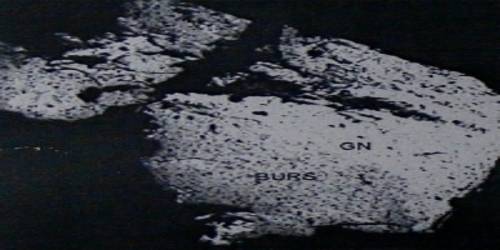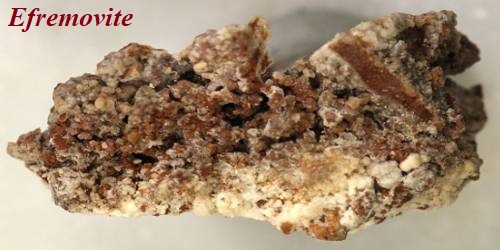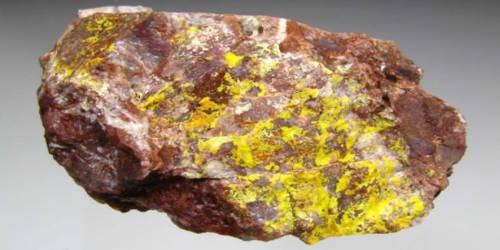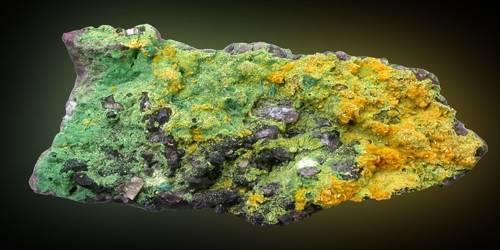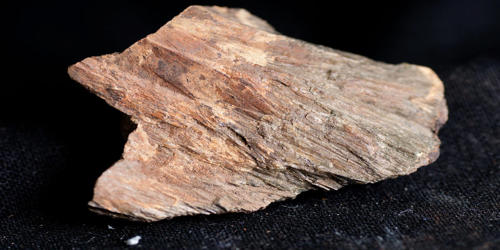Bursaite is a sulfosalt of the lillianite family. It was named after the original locality of the mineral in Bursa Province, Turkey. It has the formula Pb5Bi4S11 and orthorhombic structure. Bursaite is named after Bursa Province, Turkey, where it was discovered. It is generally located in regions rich in sulfur and commonly occurs alongside other sulfosalts. Its areas of formation are usually those that were once volcanogenic because it is generally aggregated with other minerals under intense heating. It was officially delisted as a mineral in 2006, being cited as an intergrowth of two other sulfosalts.
General Information
- Category: Sulfosalt mineral
- Formula: Pb5Bi4S11
- Crystal system: Orthorhombic (Intergrowth of two sulfosalts)
- Space group: Bbmm
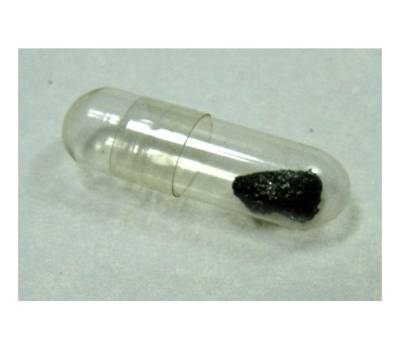
Properties
Bursaite can be identified in the field by its gray color. Its opaque form has good cleavage. This mineral has a metallic luster. The density of bursaite is 6.2 g/cm3 with a hardness of 2.5 to 3 – between fingernail and calcite.
- Formula mass: 2177.65 g/mol
- Color: Gray to white
- Crystal habit: Prismatic crystals with platy, long grains
- Twinning: Lamellar twinning on (001), sometimes (110) plane
- Cleavage: Tabular on (100) – good
- Mohs scale hardness: 2.5 – 3
- Luster: Metallic
- Density: 6.2 g/cm3 (calculated)
- Optical properties: Opaque; strong anisotropy
Although bursaite’s color is usually gray, its weak pleochroism can give it a whitish-blue tinge, and its strong anisotropy yields colors ranging from blue to yellow. Many hand samples of bursaite appear to be nearly identical to the mineral lillianite.
Bursaite has a hardness of 2.5 on the Mohs scale. It has a gray, metallic luster that appears white in polished sections. The mineral is also known to have good tabular cleavage along the (100) planes.
Occurrence
Like many sulfosalts, bursaite occurs in regions abundant in sulfur. Close to its discovery grounds, it commonly occurs in Uludag, Turkey, around a metamorphic scheelite deposit near Bursa. It is also associated with the sulfide veinlets around the Shumilovsk deposit in Russia, the volcanogenic massive Cofer deposit in Virginia, and the American Southwest. It also occurs the Czech Republic, Lipari Islands, Mexico, and Sweden.
Bursaite occurs in a contact metamorphic scheelite deposit; in sulfide veinlets around a greisen Sn–W deposit in granite; and in a volcanogenic massive sulfide deposit.
Bursaite commonly occurs alongside other sulfosalts, such as sphalerite, pyrite, chalcopyrite, bismuth, and scheelite. It is usually formed in areas that were once volcanogenic, because of the general nature of sulfosalts and because bursaite is generally aggregated with other minerals under intense heat.
It is often associated with minerals such as sphalerite, tremolite, pyrite, calcite, garnet, scheelite, chalcopyrite, kobellite, wolframite, cassiterite, tintinaite, bismuthinite, Galena, cosalite, heyrovskyite, galenobismutite, cannizzarite, tetradymite, joseite-B, bismuth, and quartz.
Information Source:
